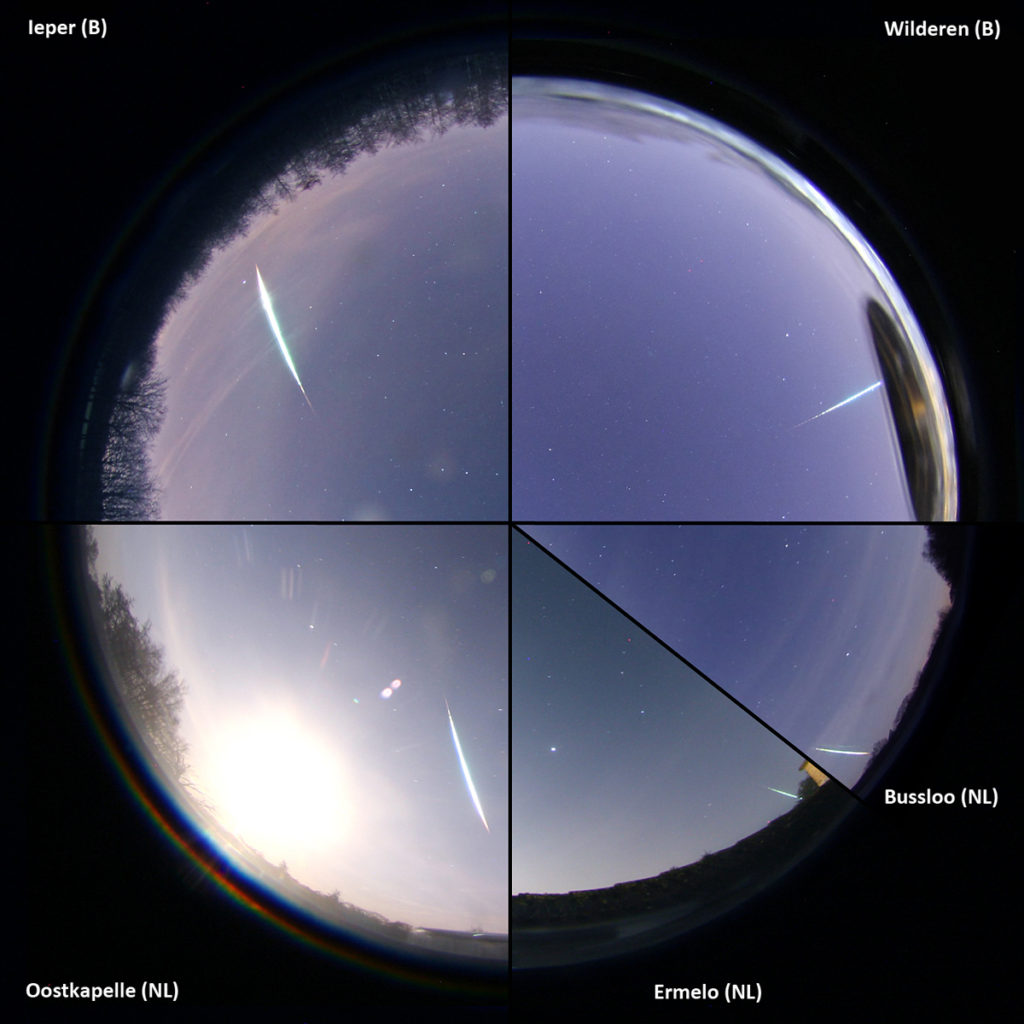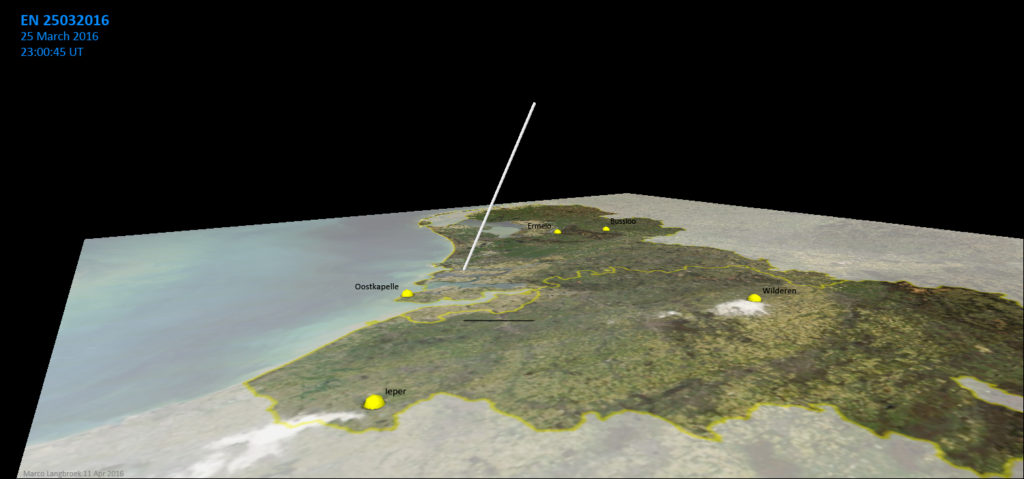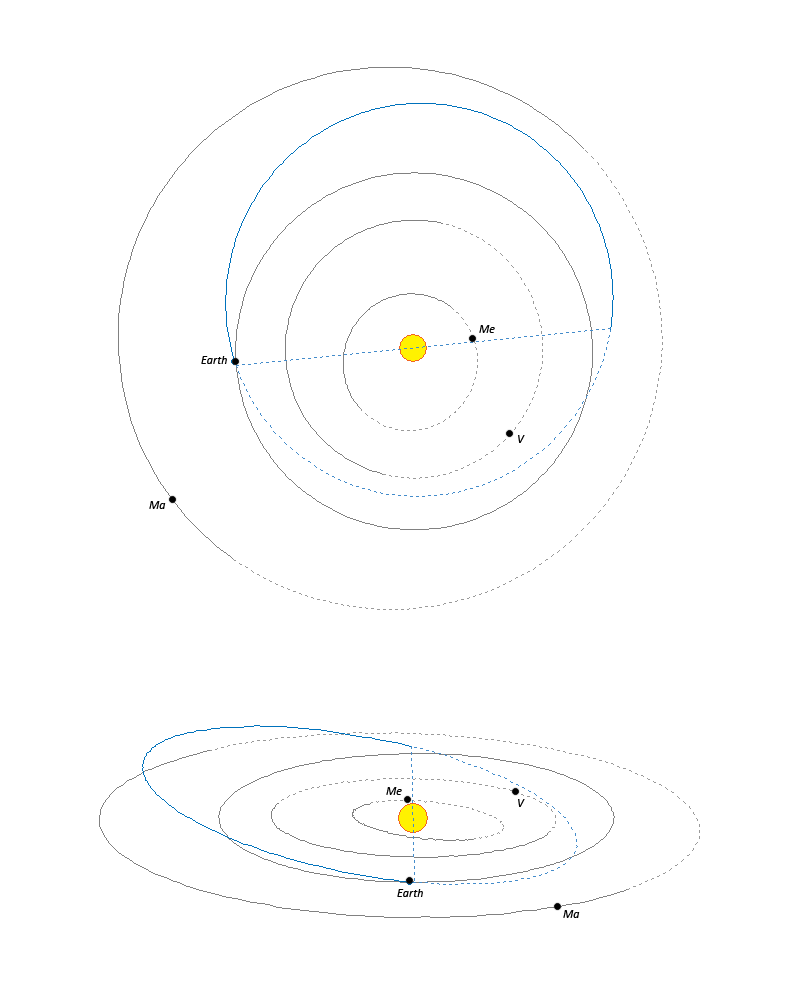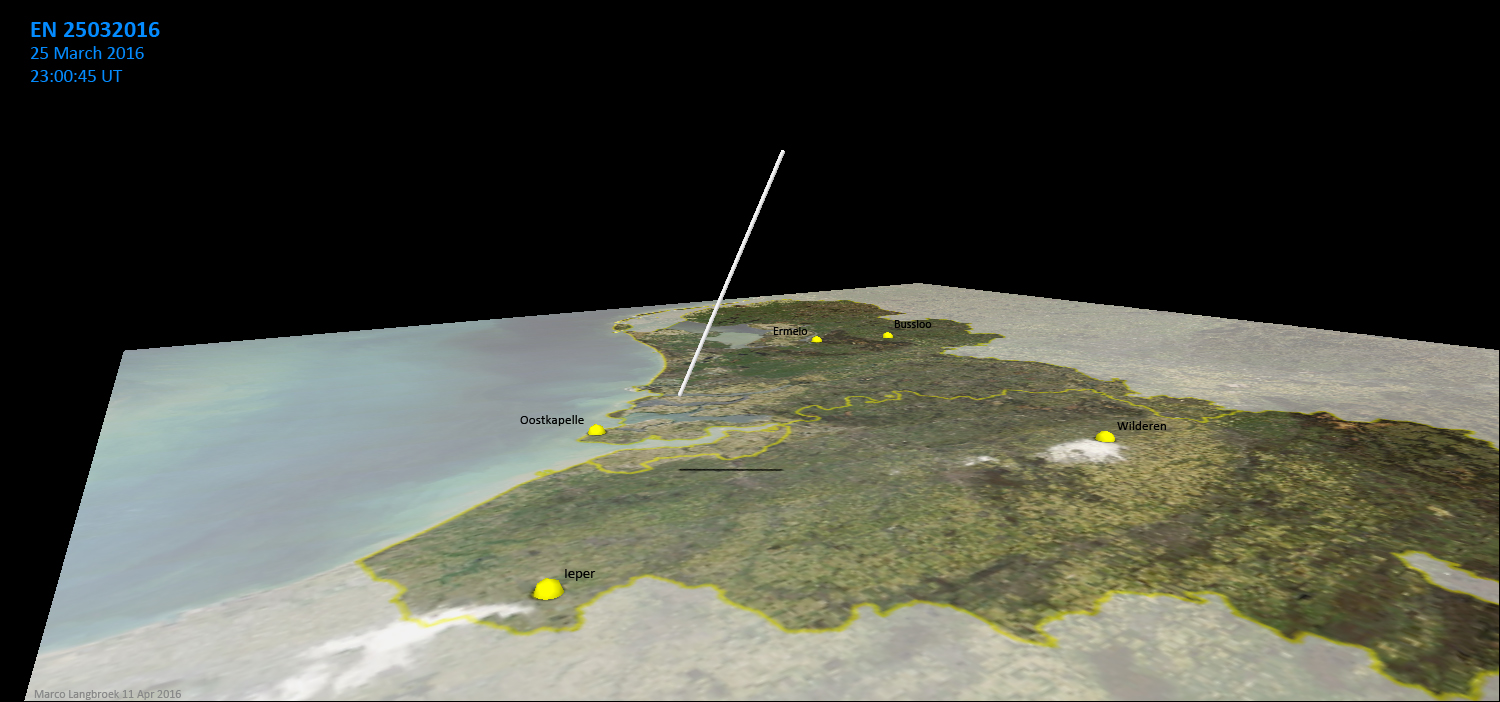This short contribution gives preliminary analytical results (trajectory, radiant and orbit) for a slow brilliant magnitude –12 fireball that appeared over the Dutch-Belgian border on 25 March 2016, 23:00:45 UT. This fireball was widely observed by many casual observers in Belgium, the Netherlands, France and Germany. It was photographically captured by three Dutch and two Belgian all-sky stations, allowing triangulation of the fireball trajectory. Trajectory, radiant and orbit were determined using TRAJECT 2.5-beta and METORB 9.0. The entry angle was steep (66° with the horizon). With an end height of only 18.8 km and clear deceleration in the speed over the trajectory, this was almost certainly a meteorite dropper. The potential dropping zone is in the province of Oost Vlaanderen in Belgium just 6 km short of the Dutch border. The geocentric radiant of the fireball was determined at RA 199°.08, Dec +31°.26 (Vgeo 9.33 km/s). The orbit is a short period Apollo (orbital period only 1.18 year), with eccentricity 0.2482, inclination 10°.32, perihelion at 0.841 AU and aphelion at 1.40 AU, i.e. completely within the orbit of Mars.
Introduction
On 25 March 2016 at 23:00:45 UT, five photographic stations in the Dutch and Belgian All Sky network captured a brilliant slow sporadic fireball, a potential meteorite dropper, over the Belgian-Dutch border area (Figure 1). This contribution gives some preliminary results on the orbit and atmospheric trajectory of this fireball based on the photographic images.
The atmospheric trajectory and speed were calculated using TRAJECT 2.5-beta, an Excel implementation of Ceplecha’s plane-fitting method (Ceplecha, 1987) created by the author. The orbit was calculated using the TRAJECT output as input in METORB 9.0 (Langbroek, 2004).

Figure 1 – Compilation of the all sky images from Wilderen, Ieper, Ermelo, Oostkapelle and Bussloo.
Photographic data and visual reports
This fireball was widely observed and reported by casual observers in the Netherlands, Belgium, Germany and France. It was also captured by three Dutch all sky stations of the Dutch Meteor Society (DMS) and two Belgian all-sky stations of the Belgian Association for Astronomy (VVS). It concerned the stations Ieper and Wilderen in Belgium (operated by Franky Dubois and Jean-Marie Biets); and stations Oostkapelle, Ermelo and Bussloo in the Netherlands (operated by Klaas Jobse, Koen Miskotte and Jaap van ‘t Leven) . The very slow mag -12 fireball had a duration of more than 3 seconds.
VIDEO – Video capture of the fireball by Klaas Jobse, Oostkapelle (NL)
Trajectory and speed
Trajectory results from TRAJECT 2.5-beta place the fireball over the Dutch-Belgian border area, over the northernmost part of the Belgian province of Oost Vlaanderen. The fireball moved from the E-SE to W-NW (coming from azimuth 124°) with a steep entry angle (66° with the horizontal), starting at an atmospheric altitude of more than 75 km near 3°.89 E, 51°.09 N and ending at an atmospheric altitude of only 18.8 km near 3°.2 E, 51°.6 N over Belgium, only 6 km short of the Dutch border (note: more accurate coordinates are available but are withheld at the moment).
Two stations (Ermelo and Wilderen) were equipped with rotating shutters and provide speed data. The reconstructed initial atmospheric speed was low, only 14.58 km/s. Deceleration is visible over the part of the trajectory for which we have speed information: unfortunately both stations equipped with rotating shutters missed the end of the fireball due to horizon obstruction. The terminal speed can therefore only be extrapolated from the observed deceleration in the early part of the trajectory, but must have been below 10 km/s. Given the very low atmospheric end height (~19 km) derived from the data of the stations that did capture the fireball in its entirety, this was almost certainly a meteorite dropping event. Field recovery efforts are conducted at the moment of writing.
Radiant and orbit
The preliminary analysis of the photographic data results in the radiant and orbit data presented in Tables 1 and 2.
Table 1 – preliminary radiant data (2000.0), fireball 26 March 2016 23:00:45 UT
| Observed | Geocentric | |
| RA | 196°.64 | 199°.08 |
| DEC | +35°.01 | +31°.26 |
| V | 14.58 km/s | 9.33 km/s |

Figure 2 – 3D reconstruction of the fireball trajectory (graphic made with QGIS).
Table 2 – preliminary orbit (J2000), fireball 26 March 2016 23:00:45 UT.
|
q |
0.841 AU |
| Q | 1.4 AU |
| a | 1.119 AU |
| e | 0.2482 |
| inc | 10°.32 |
| ω | 257°.752 |
| Ω | 5°.5026 |
| π | 263°.25 |
| Period |
1.18 Year |
The radiant of the fireball is located not too far from that of the Glanerbrug, Pribram and Neuschwanstein meteorites (three historic early April falls). The geocentric speed of the 25 March 2016 fireball (9.33 km/s) was however much slower than for those meteorite falls, and as a result the orbit is quite different. A dynamic link is therefore unlikely.
The fireball orbit is a low inclined, asteroidal, Apollo type orbit and interesting because it is completely within the orbit of Mars with an aphelion at 1.40 AU and an orbital periodicity of less than 1.2 years.

Figure 3 – Orbit of the fireball.
Infrasound detection
Jelle Assink and Laslö Evers (Royal Dutch Meteorological Institute KNMI) communicated that infrasound has been captured from this fireball by three Dutch infrasound stations.
Acknowledgments
I thank Jean-Marie Biets, Franky Dubois, Klaas Jobse, Koen Miskotte and Jaap van ’t Leven for making imagery of the fireball available for analysis. Jelle Assink and Laslö Evers (KNMI) communicated preliminary infrasound results. I am much obliged to Felix Bettonvil (NL) and Rob Matson (USA) for discussions and verification of initial results. Field recovery efforts in Belgium are currently organized by Jean-Marie Biets.
References
Ceplecha Z. (1987). “Geometric, Dynamic, orbital and photometric data on meteoroids from photographic fireball networks”. Bull. Astron. Inst. Czechosl., 38, 222–234.
Langbroek M. (2004). “A spreadsheet that calculates meteor orbits”. WGN, Journal of the IMO, 32, 109–110.







